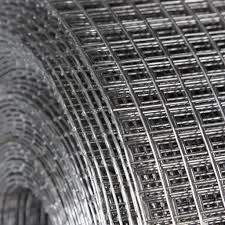residential chain link fence parts
Nov . 16, 2024 15:17
Understanding Residential Chain Link Fence Parts A Comprehensive Guide
When it comes to securing your property, a chain link fence is a popular and practical choice for many homeowners. Known for its durability and cost-effectiveness, a chain link fence provides essential benefits, including security, visibility, and minimal maintenance. To effectively install or maintain a chain link fence, it is crucial to understand its various components. In this article, we will explore the essential parts of a residential chain link fence and their functions.
1. Chain Link Fabric
At the heart of any chain link fence is the chain link fabric itself. This is made of galvanized steel wires that are woven together to form a diamond-shaped pattern. The wire gauges typically range from 11 to 9, with 11 being thinner and more suitable for residential applications. The chain link fabric is available in various heights, typically from 3 to 12 feet, depending on the needs of the homeowner. The fabric acts as the primary barrier, providing both security and visibility.
2. Terminal Posts
Terminal posts are the sturdy vertical elements that support the fence fabric and play a crucial role in maintaining the fence's structure. They are usually made of galvanized steel and are larger in diameter compared to the other posts. Terminal posts are located at each end of the fencing line, as well as at corners and gate openings. Proper installation of terminal posts is vital, as they bear the tension created by the stretching of the chain link fabric.
3. Line Posts
Line posts are spaced evenly along the length of the fence, typically every 6 to 10 feet, depending on local regulations and the overall height of the fence. They support the chain link fabric and help maintain its tautness. Line posts are also constructed from galvanized steel but are slimmer than terminal posts. These posts are critical in ensuring that the fence remains upright and secure against wind and other forces.
4. Top and Bottom Rails
residential chain link fence parts

Rails are horizontal components that run along the top and bottom of the chain link fence. The top rail provides additional stability and can prevent the fabric from sagging over time. It is typically made of steel and is connected to the terminal and line posts. The bottom rail, while not always used in residential fences, can offer extra support and enhance the overall durability of the structure. Both the top and bottom rails help distribute tension throughout the fence.
5. Tension Wire
Tension wire is a crucial component that adds strength to the bottom of the fence. It is strung alongside the bottom of the chain link fabric and is attached to the line and terminal posts. Tension wire prevents the fabric from bowing out and provides additional stability by counteracting the pressure exerted on the fence.
6. Gates
A chain link fence is often equipped with one or more gates for access to the area being enclosed. Gates can be designed in various styles, from single walk-through gates to double-wide versions for vehicles. Regardless of the style, gates must be properly aligned and secured with quality hinges and latches to ensure they close securely.
7. Accessories and Fittings
In addition to the main components, various accessories and fittings are essential for the complete installation of a chain link fence. These can include post caps, tie wires (used to secure the fabric to the posts), and various types of hardware such as hinges, latches, and brackets.
Conclusion
Understanding the various parts of a residential chain link fence is crucial for proper installation and maintenance. Each component plays a significant role in ensuring the fence is strong, secure, and long-lasting. Whether you are planning to install a new chain link fence or simply maintain an existing one, having a solid grasp of these essential parts will help you achieve your fencing goals effectively.




















